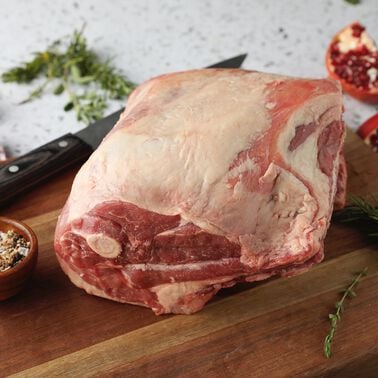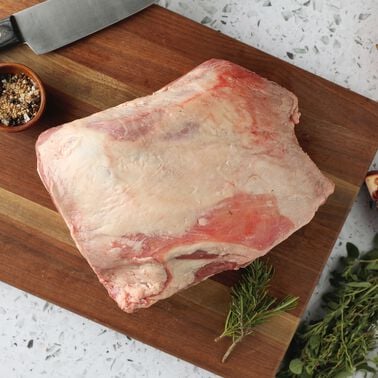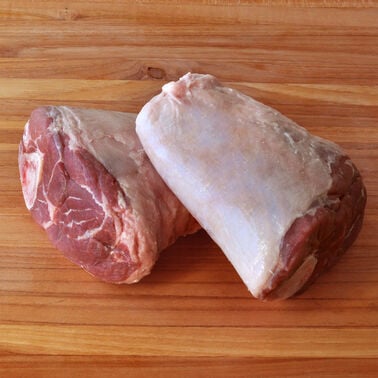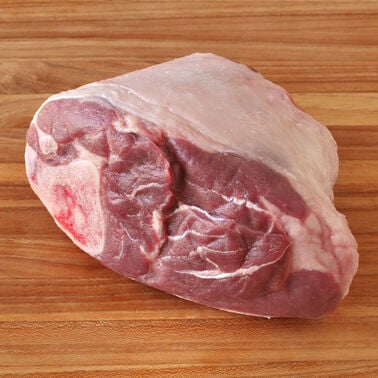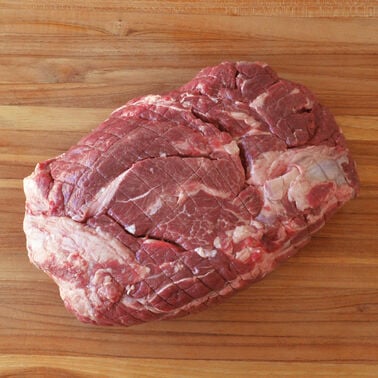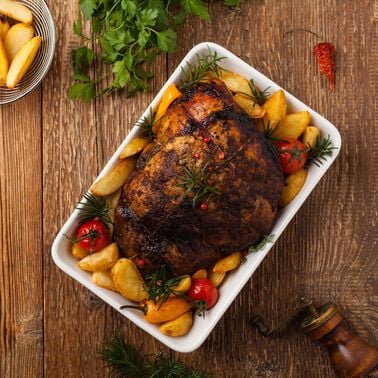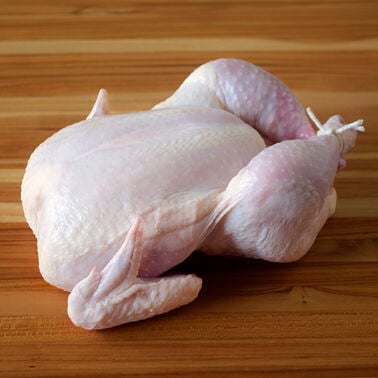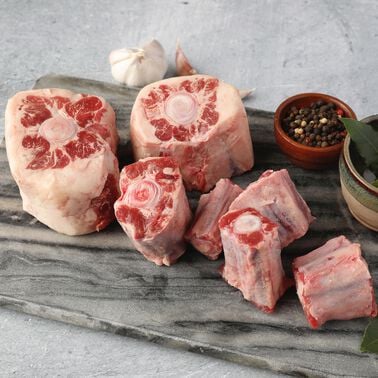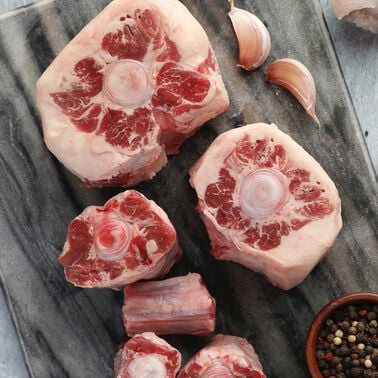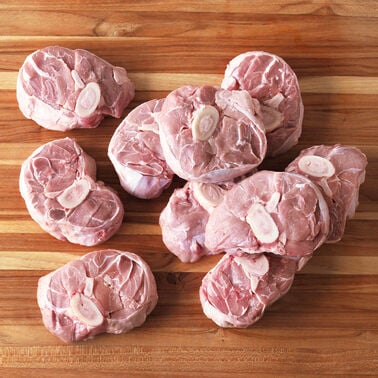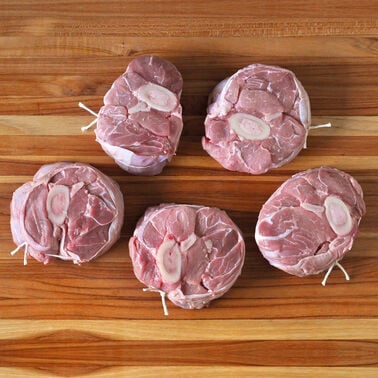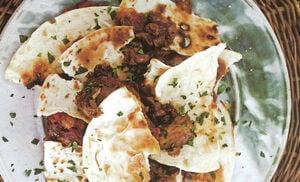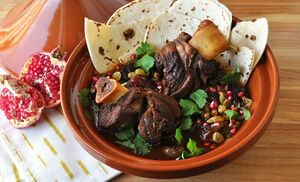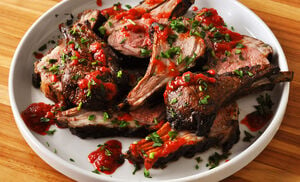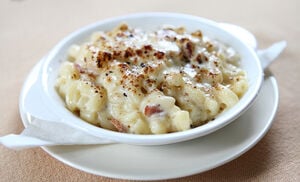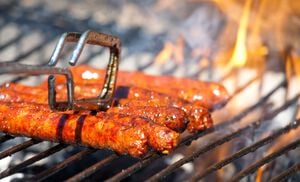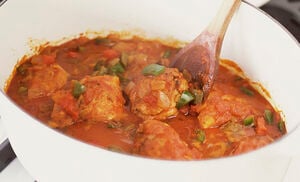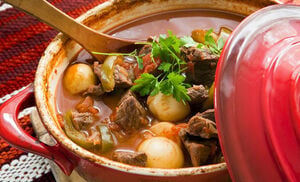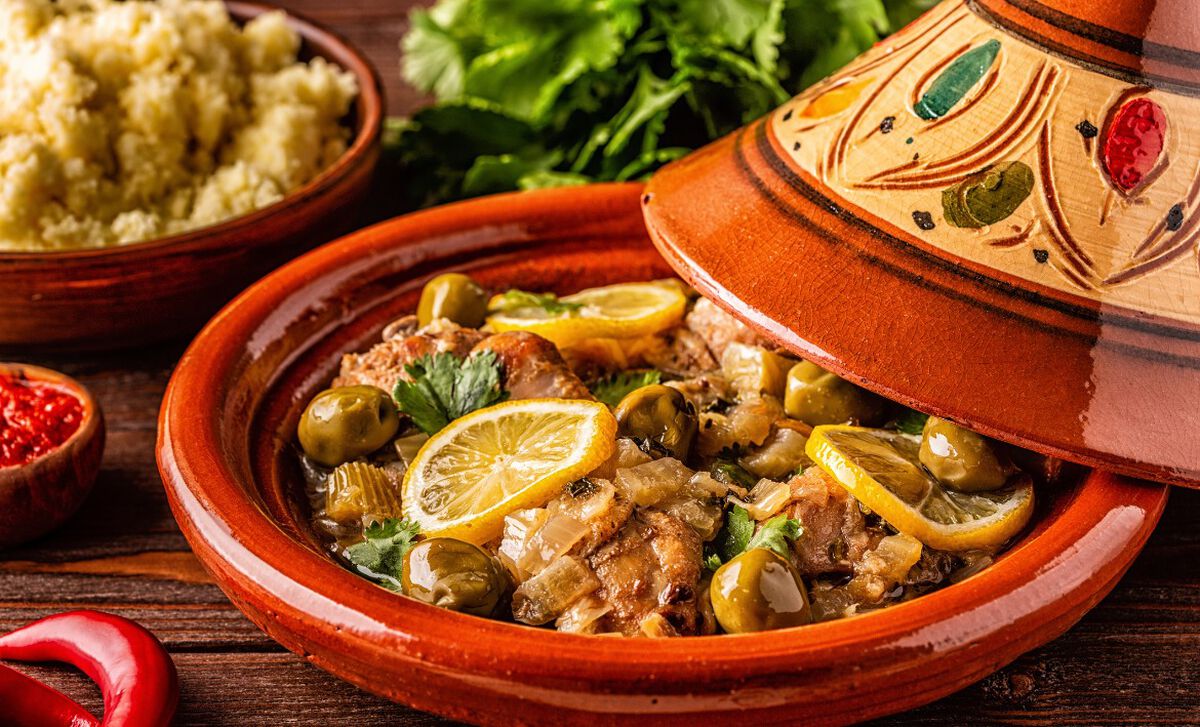
What’s in a Name?
Like terrine, tagine names both a type of dish and the earthenware vessel used to cook it. After that, the two (or should I say four) dishes each go their own distinctive ways.
In French cuisine, there are many adaptations of these spicy slow-cooked stews often made with chicken, or cuts of lamb like the shank or shoulder, and a wide variety of seasonal vegetables. Hours of slow gentle braising make the sauce thick and rich and the meat so moist and incredibly tender, that it cannot help but fall from the bone. Other poultry and cuts of meats that stand up to braising are also used.
Preserved lemon and an array of olives frequently serve as the flavor base, rounded out simply or with a complexity of aromatic spices, paired perfectly with the meat and vegetables. The use of fresh and dried fruits, as well as honey, is common, contributing a delicate sweetness to the overall flavor. While at a glance it may seem that spicing is the same, subtle tweaks make each tagine unique.
One classic chicken tagine has a silken sauce of luscious olives and tart, preserved lemons seasoned with saffron, cumin, ginger, and paprika. Lamb tagine with fried aubergines employs paprika and cumin as well but is more sturdy and robust. Lamb tagines with prunes or dates are also rich and substantial. Served with couscous, rice, or even mashed potatoes or polenta, these dishes make for the perfect winter comfort food.
Form and Function
Recipes may begin on the stove and move to the oven, cook entirely on the stove, or solely in the oven sans browning. Regardless, most authentic recipes generally have little or no added cooking liquid. This is where the fabulous vessel comes into play. Not only is the form beautiful it is the epitome of functionality.
Traditionally used by nomads as portable cookers heated over charcoal braziers, Moroccan tagines are made from heavy clay to hold in the heat and to withstand everyday use. The shallow base is designed for cooking and serving; while the characteristic conical domed cover creates a condition that promotes the return of condensation i.e., recently evaporated moisture and flavor, to the cooking. This serves to concentrate the flavors and yields the most succulent and headily aromatic dishes.
So Many Choices...
Modern European versions are similarly shaped, but most are constructed with heavy, enameled cast iron bases and earthenware tops. One highly regarded company does, however, make a glazed all-ceramic version exclusively with clay from the Bourgogne (Burgundy) Province of France.
There are Moroccan tagines for cooking and serving, while the highly decorated ones are usually just for serving. A genuine Beldi or folk tagine is beautifully simple, often unglazed and the clay imparts a desirable, unique flavor during cooking. On the other hand, European versions are somewhat better at withstanding higher heat, rapidly changing temperatures, and other modern cooking conditions especially when recipes call for an initial browning.
If you are unable to decide, do not despair. Most tagine recipes translate well enough for preparation in a conventional braising pot. That said, it is easy to get hooked on these delectable dishes, and a proper cooking tagine is well worth the extra consideration.
